In the ever-evolving world of gourmet beverages, few drinks have captured the hearts and palates of enthusiasts as profoundly as barista coffee. Steeped in tradition yet constantly innovating, this artisanal approach to coffee is as much an art form as it is a science. Drawing from time-honored techniques and the latest trends, barista coffee offers an immersive experience that extends beyond the cup, turning everyday moments into memorable rituals. Join us as we dive deep into the aromatic and flavorful universe of barista coffee, exploring its rich heritage, diverse techniques, and the passion that fuels it all.
Don’t want to read? Press play and enjoy the article as an audio version below.
- Introduction & Key Takeaway
- https://app.mysoundwise.com/tracks/16984324677072358e.mp3
- The Art and Science of Coffee Brewing
- https://app.mysoundwise.com/tracks/16984324960255574e.mp3
- Current Trends in Barista Coffee
- https://app.mysoundwise.com/tracks/16984325239519275e.mp3
- Tools of the Trade: Equipment Essentials
- https://app.mysoundwise.com/tracks/16984325658778533e.mp3
- Coffee Culture and the Role of the Barista
- https://app.mysoundwise.com/tracks/16984331314862410e.mp3
- Tasting and Pairing: Elevating the Coffee Experience
- https://app.mysoundwise.com/tracks/16984331613743936e.mp3
- Conclusion & FAQs
- https://app.mysoundwise.com/tracks/16984332918829197e.mp3
Barista Coffee: Key Takeaway
- Artisanal Craft: Barista coffee isn’t just about brewing; it’s an art form that marries tradition with innovation, delivering a unique experience in every cup.
- Beyond the Brew: The world of barista coffee offers an immersive experience, transforming simple coffee breaks into cherished rituals and moments of connection.
- Dynamic Evolution: While deeply rooted in time-honored techniques, barista coffee is constantly evolving, embracing new trends and methods to enhance the coffee experience.
- Passion-Driven: At the core of every exceptional barista coffee is the passion and dedication of the barista, whose skills and knowledge play a pivotal role in crafting the perfect brew.
- A Flavorful Journey: Delving into barista coffee is not just about taste but an exploration of its rich heritage, diverse brewing techniques, and the intricate nuances that make each cup distinct.
The Art and Science of Coffee Brewing
Coffee brewing is a captivating blend of art and science. From the bean selection to the extraction process, the magic of creating the perfect cup of coffee requires knowledge, precision, and sometimes, a bit of intuition. Whether you’re a seasoned barista or a coffee enthusiast seeking to perfect your morning cup, understanding the intricacies of brewing is fundamental. Let’s delve deep into the fascinating world of coffee, from its bean origins to the culmination of a delicious brew.
Understanding the Basics: Bean Types and Roasting Levels
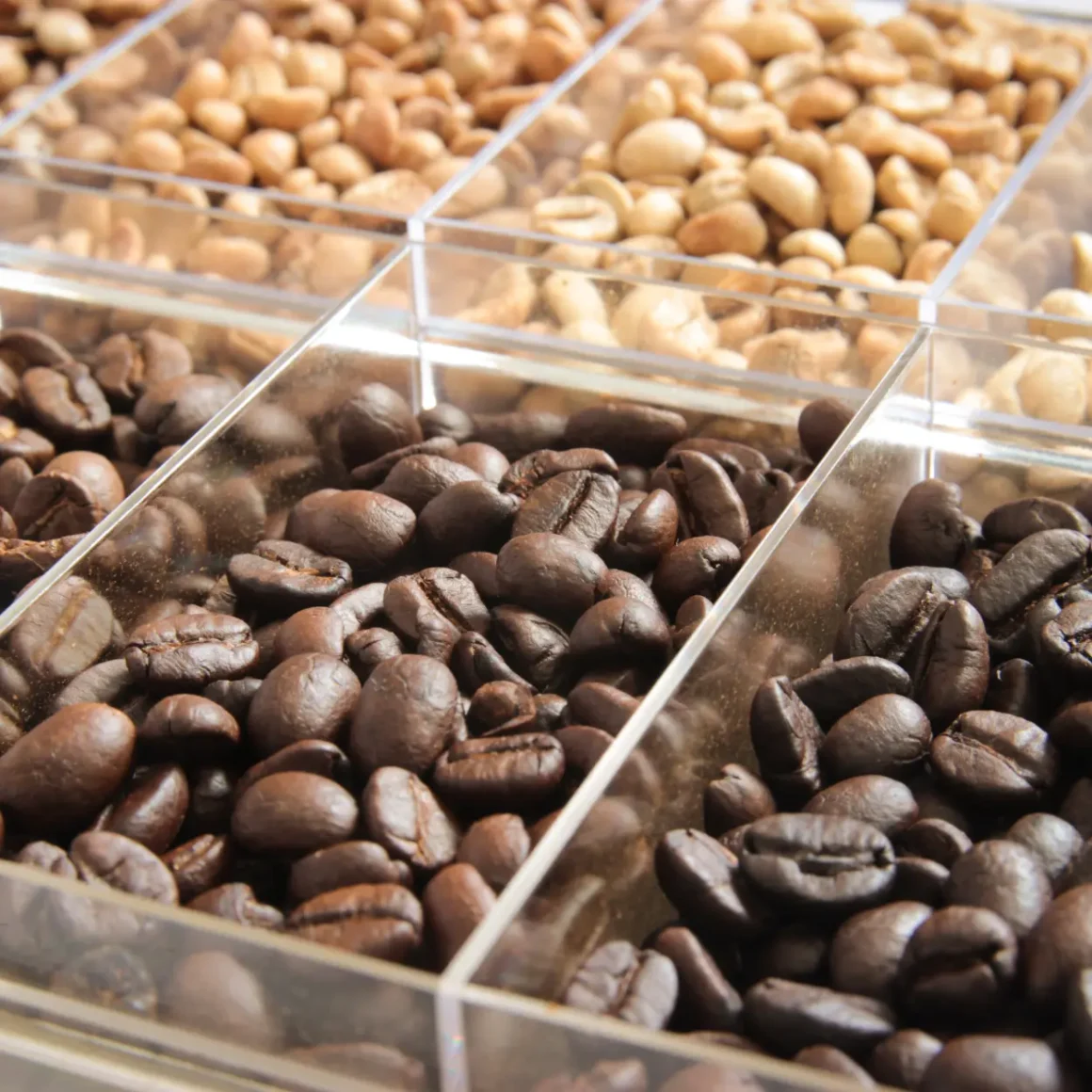
Before diving into the actual brewing process, it’s crucial to have a foundational understanding of the beans themselves and the significance of roasting.
- Bean Types: The two main types of coffee beans are Arabica coffee and Robusta. Arabica beans are renowned for their smoother, more refined flavors and aromatic qualities. In contrast, Robusta beans, while hardier, often possess a more potent, sometimes bitter flavor.
- Roasting Levels: Roasting is where the magic happens, transforming green coffee beans into the aromatic ones we’re familiar with. There are various roasting levels, from light to dark. Light roasts retain more of the bean’s original flavors, emphasizing its natural characteristics. As we progress to medium and then dark roasts, the flavors become more intense, and caramelization takes center stage. It’s essential to match the roasting level with the desired brew method and individual preference.
The Role of Water: Temperature and Quality in Brewing
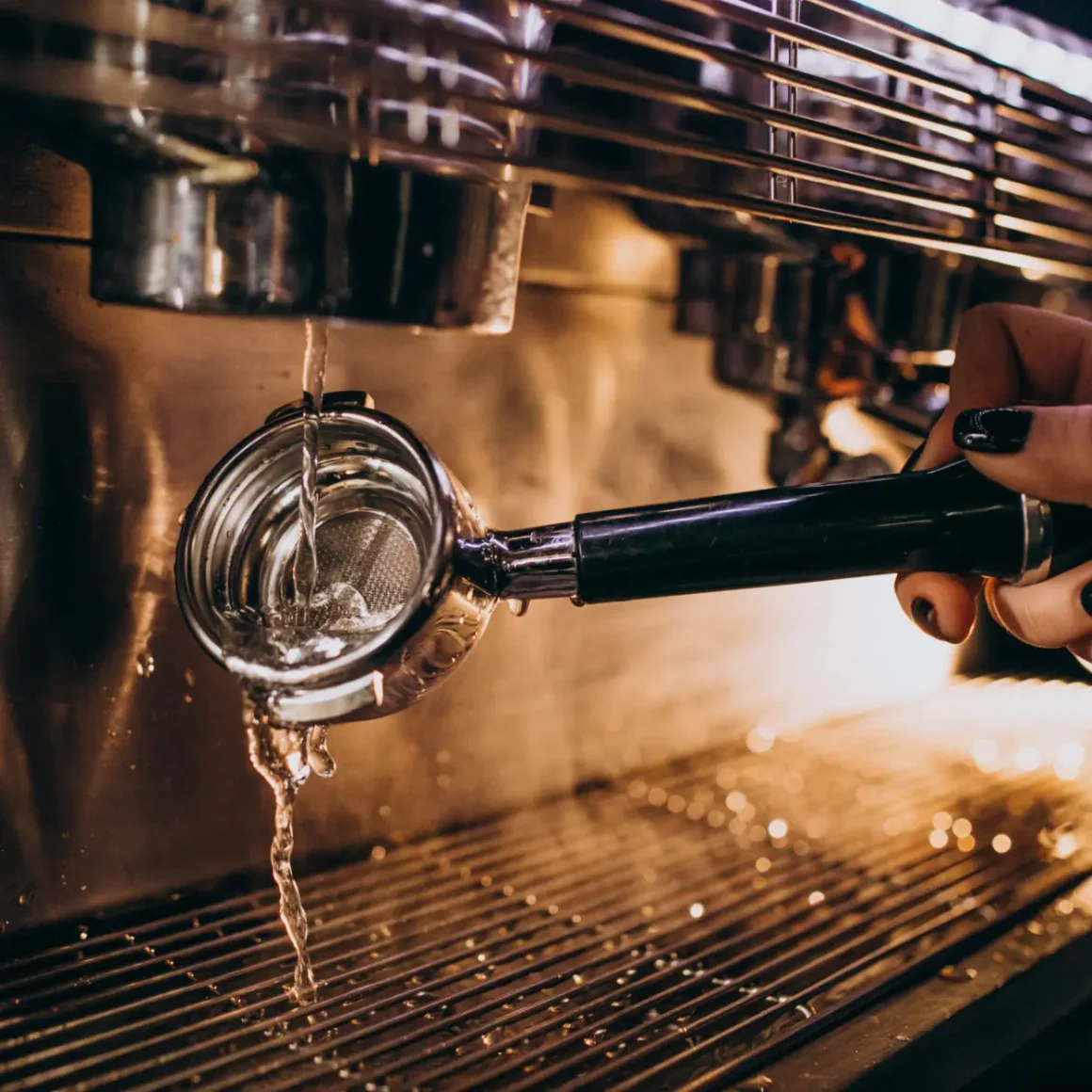
Water isn’t merely a medium for brewing; its quality and temperature play pivotal roles in defining the character and taste of your coffee.
- Coffee Brewing Temperature: Achieving the right temperature is critical for optimal extraction. The general recommended range is between 195°F to 205°F (90°C to 96°C). Too hot, and you risk over-extraction, resulting in a bitter brew; too cold, and the flavors won’t be sufficiently extracted. (1)
- Water Quality: The importance of water quality is often understated. After all, water constitutes a significant portion of your brew. Using clean, filtered water free from impurities can make a considerable difference in the taste profile. Minerals in the water can interact with coffee compounds, sometimes enhancing and at other times detracting from the flavor. (2)
Extraction Techniques: From Drip to Espresso

The way you extract flavors from the coffee grounds is a defining factor in the taste, aroma, and mouthfeel of your brew.
- Drip Coffee Maker: Among the most popular brewing methods is the drip coffee maker. Ground coffee is placed in a filter, and hot water drips over it, allowing gravity to pull the water through the coffee grounds, extracting flavors along the way. It’s a straightforward method, yet the resultant brew can be incredibly nuanced based on grind size, water temperature, and the coffee-to-water ratio.
- Espresso coffee machine: Espresso is the heavyweight in the coffee world, delivering a concentrated coffee shot. It’s produced by forcing hot water under pressure through finely ground coffee. The technique extracts flavors rapidly, resulting in a rich, robust shot that serves as the foundation for many barista coffee creations.
In the world of coffee brewing, there’s always something new to learn, be it a technique, a bean type, or even a roasting method. With patience and practice, one can master the art and science behind that perfect cup. Whether you’re enjoying a simple drip coffee or savoring an expertly crafted barista coffee, the journey from bean to brew is nothing short of magical.
Current Trends in Barista Coffee
Barista coffee has come a long way from just being a cup of joe to a sophisticated art form and a representation of culture. The industry is continuously evolving, with new trends emerging and existing ones getting refined. The meticulous craft, combined with innovation and experimentation, results in novel experiences for coffee aficionados. Let’s explore the current trends shaping the barista coffee scene and offering a fresh perspective on this age-old beverage.
The Rise of Specialty Coffees and Single Origin Beans
One can’t discuss modern coffee culture without recognizing the surge in demand for specialty coffees. These beverages, characterized by high-quality beans and artisanal brewing techniques, are changing the way we perceive and taste coffee.
- Single Origin Coffee: At the forefront of this revolution is single-origin coffee. These beans are sourced from a specific location, whether a particular country, region, or even a single farm. The primary appeal lies in their distinct flavor profiles, allowing coffee enthusiasts to embark on a sensory journey across the globe, cup by cup. By choosing single-origin, one is also supporting local farmers and ensuring sustainable farming practices.
- Specialty Brewing Techniques: Alongside the rise in single-origin beans, there’s been a proliferation of diverse brewing methods. From pour-overs that highlight the nuanced flavors to siphon brewing that feels like a chemistry experiment, cafes, and baristas are continuously pushing boundaries.
Latte Art: A Visual Delight in Every Cup
In the realm of barista coffee, presentation matters as much as taste. Latte art, a beautiful manifestation of a barista’s skill, is a testament to this philosophy.
- Café Latte Renaissance: The café latte, with its creamy texture and balanced flavor, serves as the perfect canvas for artistic expression. Intricate designs, from simple hearts to detailed landscapes, are crafted using steamed milk poured over a shot of espresso. Not just a visual treat, this art showcases the precision and finesse of a barista.
- Barista Training: Achieving mastery in latte art requires extensive barista training. As the trend grows, there’s a notable increase in specialized courses focusing on the technique, consistency, and creativity of crafting the perfect latte art.
Cold Brew and Nitro: Changing the Coffee Landscape
Cold beverages have carved a significant niche in the coffee industry, with cold brew and nitro coffee leading the charge.
- Cold Brew: This technique entails immersing coffee grounds in cold water for a prolonged duration, usually 12-24 hours. The outcome is a velvety, less acidic brew that can be presented over ice or mixed with milk and sweeteners. Its popularity, especially during warmer months, is undeniable. (3)
- Nitro Coffee: Elevating the cold coffee experience is nitro coffee. Infused with nitrogen gas, this brew offers a creamy texture and a cascading effect reminiscent of draft beer. The silky mouthfeel and enhanced sweetness, without added sugars, make nitro coffee a favorite among those seeking a different kind of coffee kick.
In essence, the world of barista coffee is dynamic, with each trend reflecting a blend of tradition, innovation, and artistry. Whether you’re sipping on a meticulously crafted café latte or exploring the rich tapestry of flavors in a single-origin coffee, there’s no denying that the current trends are enhancing our coffee experiences manifold.
Tools of the Trade: Equipment Essentials
To make the perfect cup of coffee, one must not only possess skill and knowledge but also have the right tools at hand. The equipment used in the coffee-making process can significantly influence the flavor, aroma, and overall quality of the brew. As the coffee industry evolves, so does the machinery and gadgets, with many options now available for both professionals and home enthusiasts. Here’s a look into the equipment essentials that can elevate your coffee-making journey.
Choosing the Right Grinder: Consistency is Key
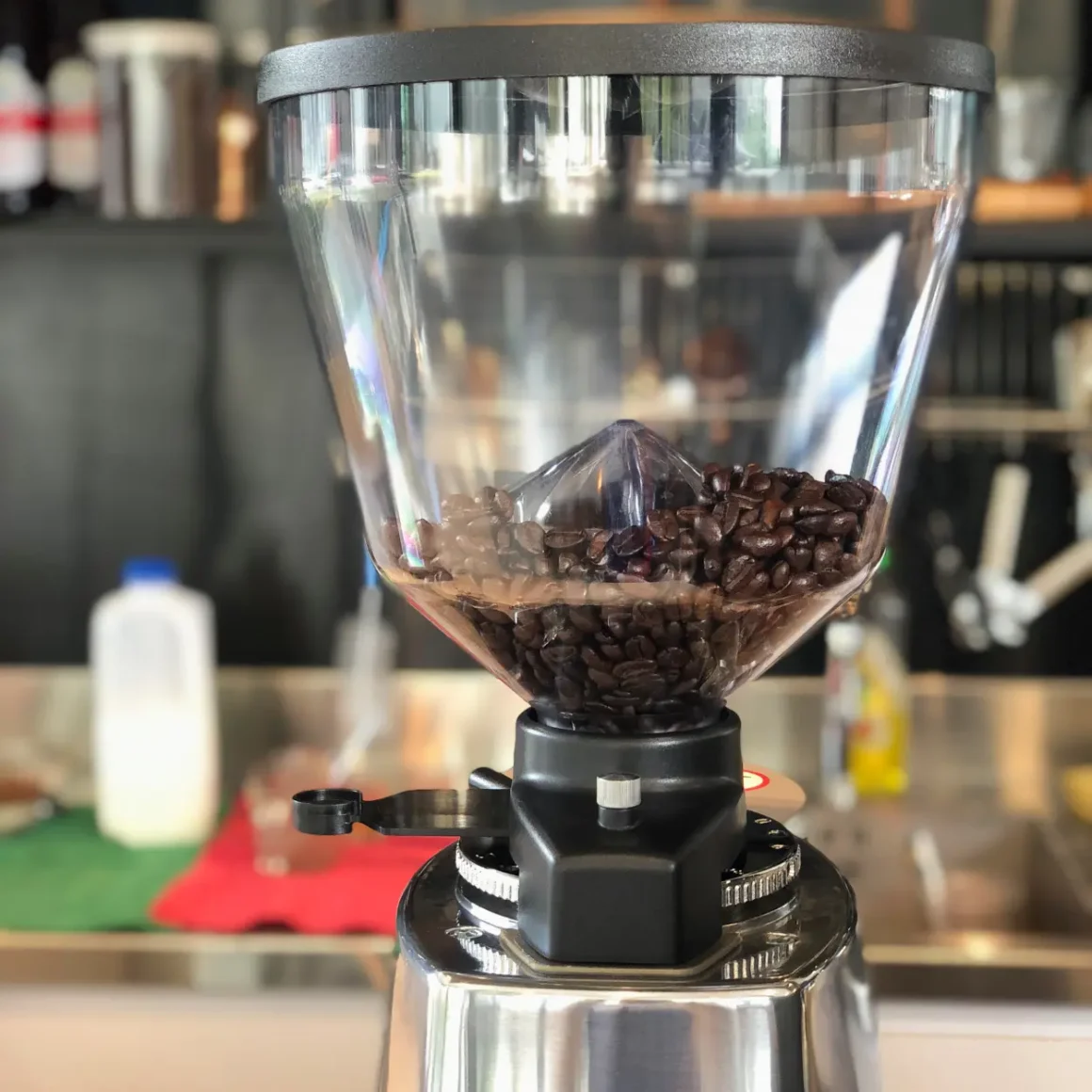
Grinding is a pivotal step in the coffee-making process, as the consistency of the grind can dramatically affect the extraction and, ultimately, the flavor of the coffee.
- Burr Grinder vs Blade Grinder: The debate between burr and blade grinders is central to achieving the desired consistency. Burr grinders, which use two oscillating, serrated plates known as burrs, offer precision and uniformity. In contrast, blade grinders use a singular blade that spins, often resulting in inconsistent grind sizes. For those serious about their coffee, burr grinders often come out on top due to their ability to produce a consistent grind, pivotal for optimal extraction.
- Adjustability: A top-tier grinder will offer multiple grind settings, allowing one to switch between fine and coarse grinds, making it versatile for different brewing methods.
Manual vs. Automatic Espresso Machines
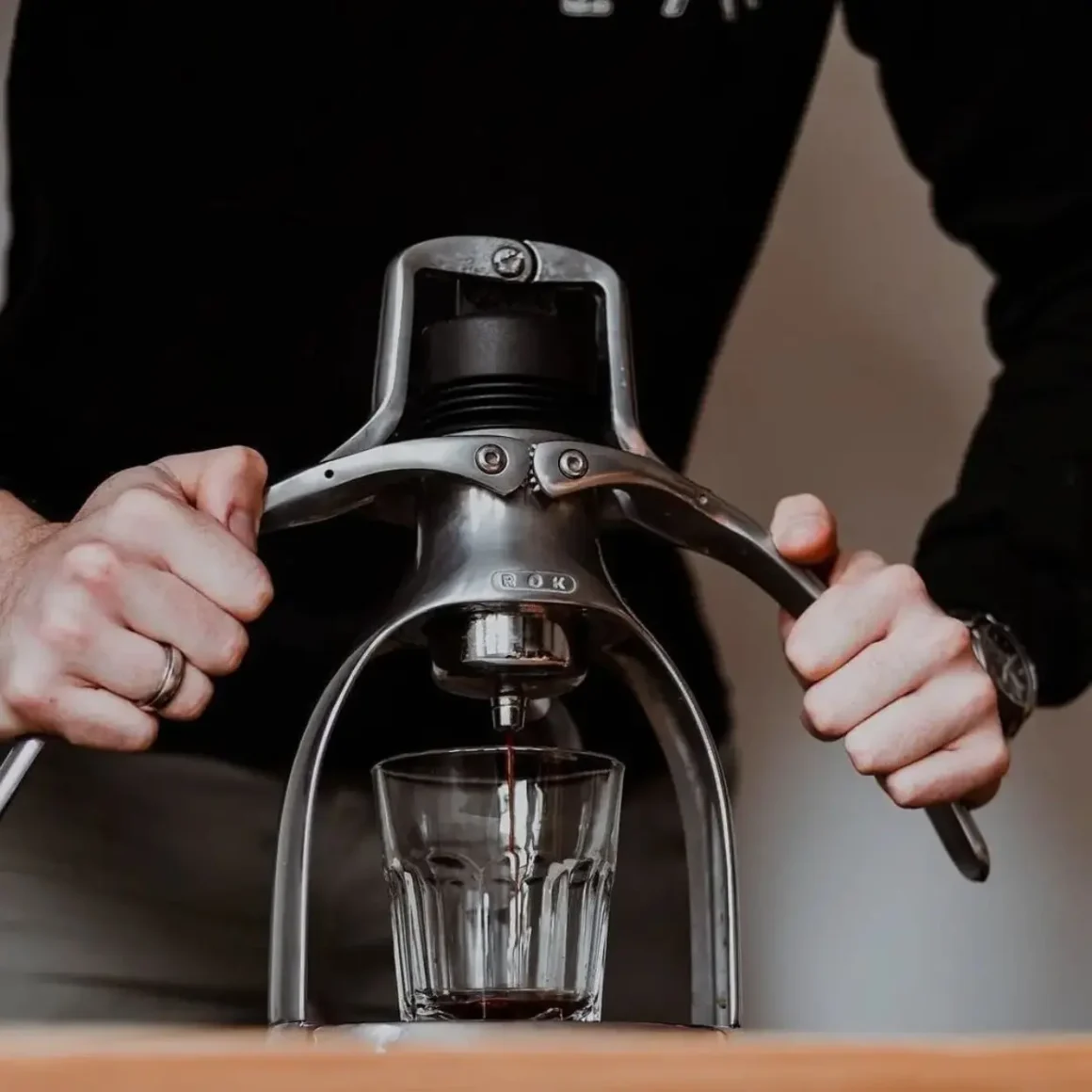
Espresso is the backbone of many coffee beverages, and the machine you use can influence the quality of the shot.
- Manual Espresso Machines: These machines require a hands-on approach. The barista has control over every aspect, from tamping the grounds to pulling the shot. While it offers more control, it also demands a higher skill level and can be time-consuming. Our ROK Espresso Maker Review highlights it as one of the best manual espresso makers, providing enthusiasts with unparalleled control over their coffee-making process, though it may require a bit of a learning curve.
- Automatic Espresso Machines: Ideal for those seeking consistency and convenience, automatic machines handle most of the process with the touch of a button. Often found in commercial settings or households where the best coffee maker is equated with efficiency, these machines ensure a standardized espresso shot every time.
- Accessorizing: Whether using manual or automatic machines, accessories like a barista apron not only protect the wearer from potential spills but also add a professional touch to the coffee-making process.
Alternative Brewing Methods: Aeropress, French Press, and More
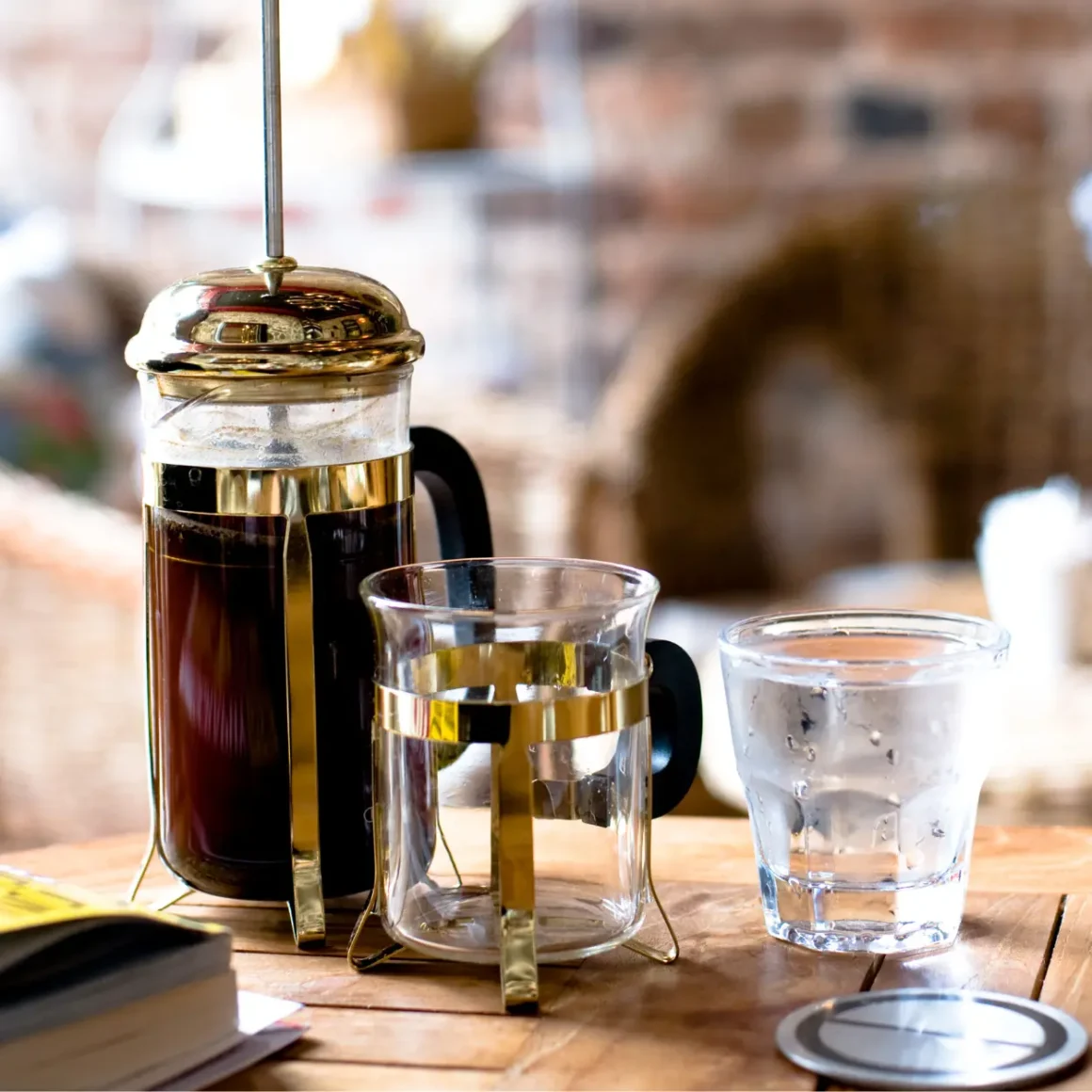
Diverse brewing methods cater to different taste profiles, offering unique experiences for the palate.
- Aeropress Coffee Maker: A relative newcomer in the coffee world, the Aeropress has gained popularity for its quick brewing time and the ability to produce a smooth, full-bodied cup. Its compact design and simplicity make it a favorite for travelers and home enthusiasts alike.
- French Press Coffee: An enduring classic, the French Press, or plunger pot, is known for its rich and robust flavor profile. By steeping coarsely ground coffee in hot water and then separating the grounds using a mesh plunger, it offers a fuller-bodied brew compared to other methods.
- Other Brewing Techniques: Beyond these, methods like pour-over, siphon, and cold brew each bring their own set of equipment and techniques, further expanding the coffee lover’s toolkit and palate.
To summarize, the tools and equipment one chooses play a defining role in the coffee-making journey. From the grind’s consistency to the brewing method, every detail matters. Investing in the right tools not only enhances the flavor and quality of the coffee but also elevates the entire brewing experience.
Coffee Culture and the Role of the Barista
Coffee is more than just a beverage; it’s a cultural phenomenon that brings people together, sparks conversations, and, at times, even drives change. Central to this culture is the barista, the guardian of the brew, who crafts each cup with skill, passion, and dedication. As coffee culture evolves, it encompasses not just the act of drinking coffee, but also the spaces in which it’s consumed and the ethical implications behind each bean’s journey. Let’s delve into this intricate tapestry that defines our modern coffee culture.
The Barista: More Than Just a Coffee Maker
When pondering over the question What is a barista? one might be tempted to offer a simplistic answer: someone who makes coffee. But the role is far more profound.
- Craft and Skill: A barista is an artisan, well-versed in the science and art of coffee-making. From understanding the nuances of different beans to mastering various brewing techniques, their knowledge runs deep.
- Ambassadors of Coffee Culture: Baristas often serve as the face of coffee shops, engaging with customers, educating them about different brews, and fostering a sense of community. Their interactions can turn a regular cafe visit into a memorable experience.
- Presentation and Professionalism: Beyond the skills, the barista’s presentation also matters. A well-chosen barista uniform or outfit can convey professionalism, showcase brand identity, and even enhance the overall aesthetic of a coffee shop.
Coffee Shops: From Local Hangouts to Global Chains
Coffee shops have been integral to societies worldwide, serving as spaces for socialization, work, relaxation, and more.
- Local Cafes: These are often the heart and soul of communities, offering a cozy space for residents to gather, chat, and bond over a cup of joe. Many local cafes have a distinct character, reflecting the tastes and vibes of the neighborhood. In our article, “What’s Found in Cafes, Not Coffee Shops,” we delve into the unique charm and offerings of these community-centric establishments, shedding light on what sets them apart from the more mainstream coffee shop experience.
- Global Chains: On the other end of the spectrum, global coffee chains offer consistency and familiarity. While they might lack the unique charm of local hangouts, their standardized menus and ambiance make them a favorite for many, especially when traveling.
- Evolution of Spaces: Modern coffee shops often merge multiple roles. They’re not just places to drink coffee but also workspaces, bookstores, or even venues for live music and events.
The Ethical Dimensions: Beyond Fair Trade Practices
As coffee consumption has grown, so has the awareness of the ethical implications associated with its production and trade.
- Fair Trade Coffee: This movement focuses on ensuring that coffee farmers receive fair compensation for their produce. By purchasing fair trade coffee, consumers can support improved workplace environments, sustainable farming practices, and economic growth in coffee-producing regions.
- Sustainability: Beyond fair trade, there’s a growing emphasis on sustainability. From eco-friendly packaging to minimizing water usage in coffee cultivation, the industry is taking steps to reduce its environmental footprint.
- Direct Trade and Relationships: Some coffee roasters and shops prefer direct trade, establishing personal relationships with coffee farmers. This approach can offer even more transparency and ensure that a more significant portion of the profits goes directly to the producers.
In essence, coffee culture is a rich blend of flavors, stories, experiences, and values. From the skilled hands of the barista crafting each brew to the ethical choices we make when purchasing our beans, every aspect contributes to the multifaceted world of coffee that we cherish today.
Tasting and Pairing: Elevating the Coffee Experience
The allure of coffee extends beyond its energizing kick; it lies in the complex symphony of flavors, aromas, and textures that can be discovered in each cup. True coffee enthusiasts know that tasting and pairing coffee isn’t just about consuming a beverage; it’s an experience, a journey of flavors waiting to be explored and celebrated. By understanding the nuances in coffee profiles and finding complementary pairings, one can elevate this everyday ritual into a gourmet adventure.
Decoding Coffee Flavors: From Acidic to Zesty
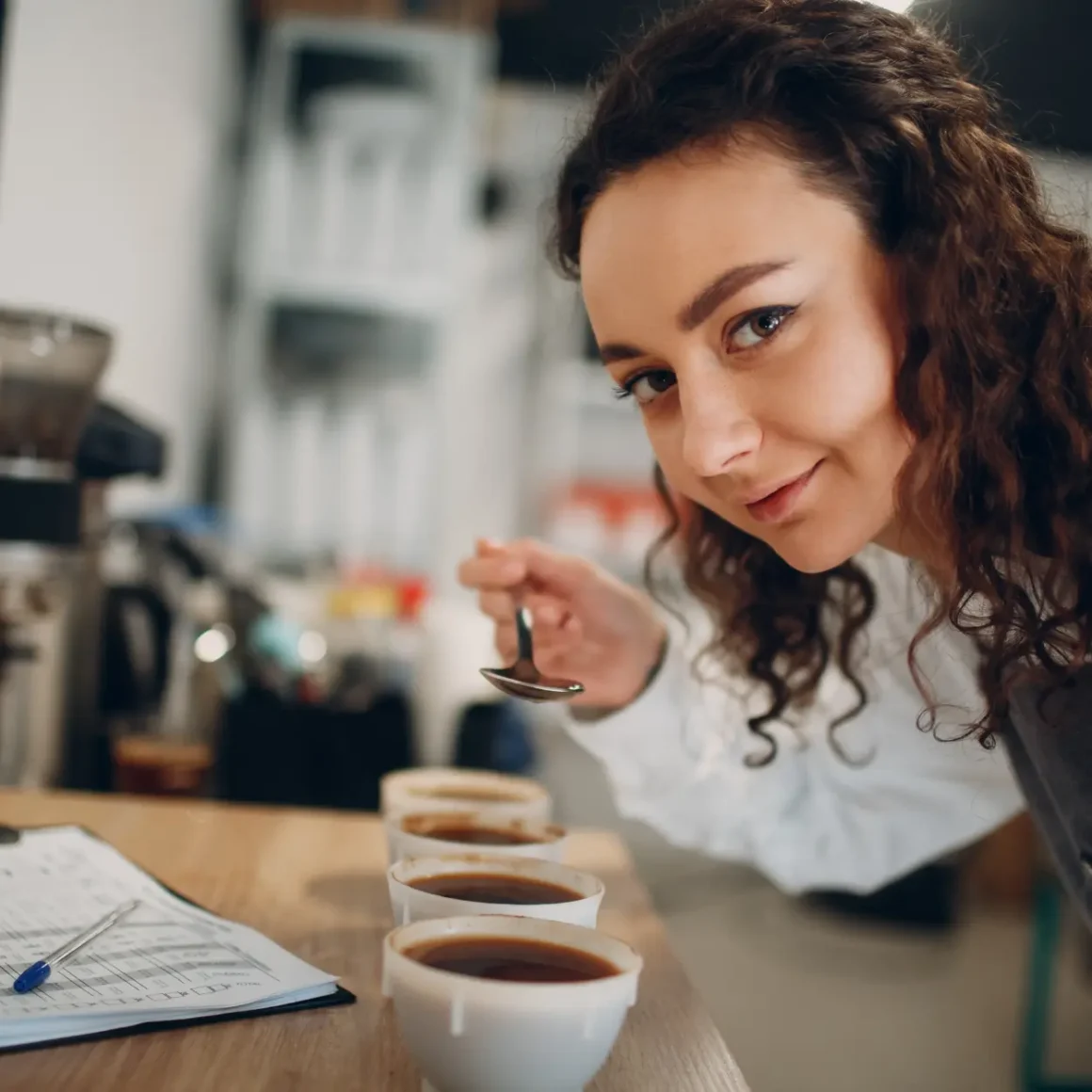
Coffee is a complex beverage, with a spectrum of flavors that can be both surprising and delightful.
- Acidity vs. Bitterness: Contrary to popular belief, acidity in coffee is a good thing. It refers to a bright, sparkly, sparkly, tangy, crisp, or sharp quality. On the other hand, bitterness, which is a natural component of coffee due to the presence of certain compounds, can be both desired and undesired. The key is balance.
- Flavor Profiles: Depending on the bean origin, roast level, and brewing method, coffee can exhibit flavors ranging from fruity (berries, citrus) to nutty (almonds, hazelnuts), from chocolaty to spicy, and everything in between.
- Sensory Experience: Beyond taste, the aroma, body, and aftertaste play crucial roles in the overall coffee-tasting experience. Engaging all senses, from smelling the brew to noting its mouthfeel, can offer a comprehensive appreciation.
Pairing Coffee with Foods: Complementary Flavors
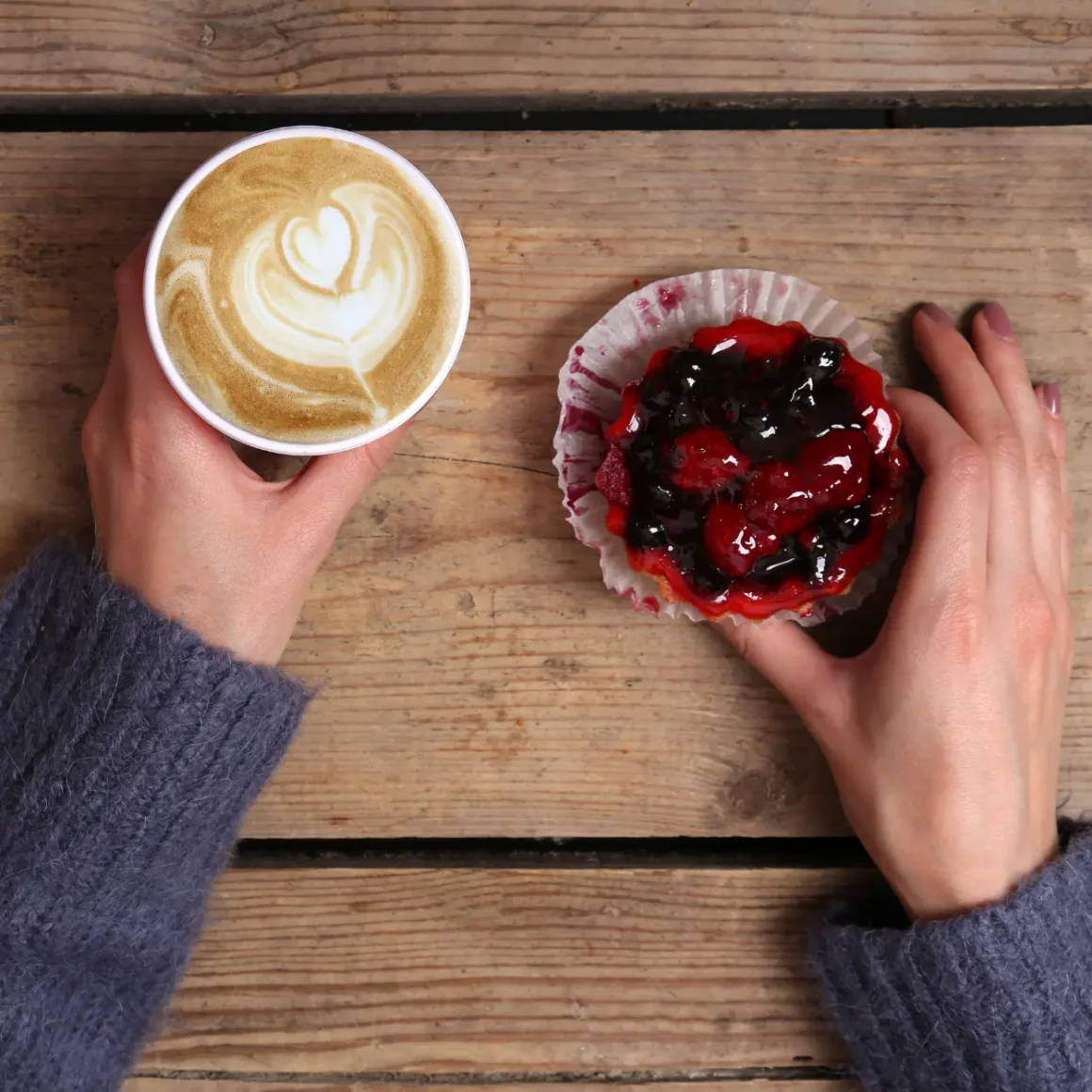
Just as wine can be paired with specific foods to enhance its flavors, so can coffee.
- Sweet Treats: The obvious choice for many, pastries like croissants, danishes, and muffins can be ideal. For instance, a fruity coffee might pair well with a berry tart, while a darker roast could complement a chocolate cake.
- Savory Delights: Not to be overlooked, coffee also pairs wonderfully with savory foods. A medium roast with a nutty profile could complement a cheese board, while a light roast coffee with citrus notes might be the perfect accompaniment for a lemony avocado toast.
- Spicy Combinations: For the adventurous, spicy foods can provide an exciting contrast to coffee’s flavors. Think of a spicy breakfast burrito paired with a robust dark roast.
Crafting Specialty Drinks: Mochas, Lattes, and More
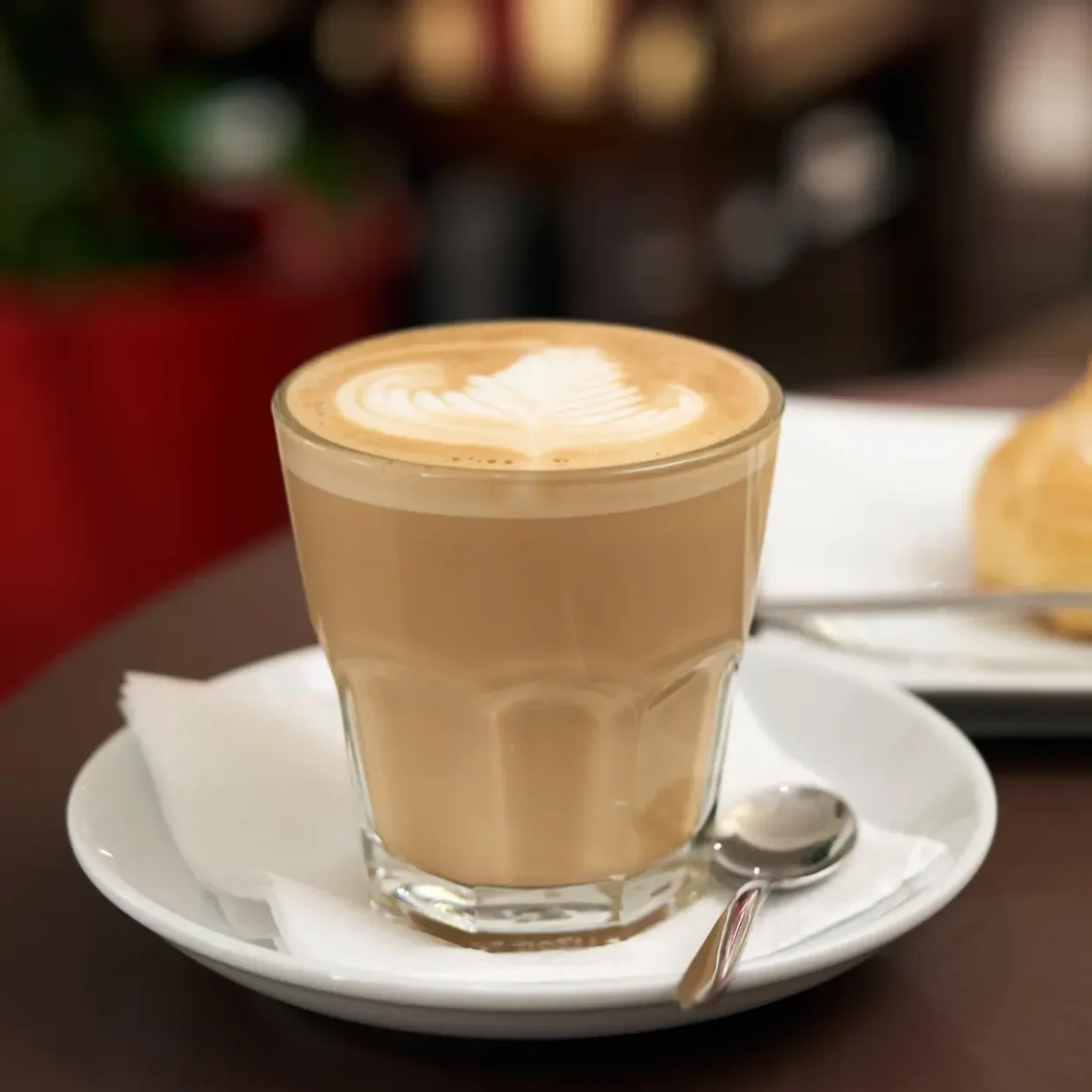
The art of coffee doesn’t end at the basic brew. Baristas around the world craft specialty drinks that are both flavorful and visually stunning.
- Mocha Cappuccino: A delightful fusion of coffee, steamed milk, foam, and chocolate syrup, mocha cappuccino offers a sweet twist to the classic cappuccino. Topped with whipped cream and a sprinkle of cocoa or cinnamon, it’s a dessert in a cup.
- cafe latte: Simplistic yet timeless, a cafe latte consists of espresso and steamed milk, with just a hint of foam on top. It’s the perfect canvas for latte art, allowing baristas to showcase their skills.
- Flat White Coffee: Originating from Australia, the flat white coffee offers a creamier texture than the traditional latte, with microfoam blended with the espresso. The result? A rich, velvety drink that beautifully balances the boldness of espresso with the subtleness of milk.
- Café Cappuccino: A balanced blend of espresso, steamed milk, and a generous amount of foam. What makes it stand out is the texture; when crafted well, the foam feels dense yet velvety.
In summation, the world of coffee tasting and pairing is vast and enriched with endless possibilities. Whether you’re savoring the intricate notes of a single-origin brew, indulging in a paired breakfast, sipping on a beautifully crafted mocha cappuccino, or even admiring a barista’s outfit as they expertly craft your drink, there’s always something new to discover and relish in the realm of coffee.
Conclusion
In the dynamic world of beverages, barista coffee stands out as a testament to the confluence of artistry, passion, and tradition. It is more than just a drink; it’s an experience, a story told in every cup. As we’ve journeyed through the intricacies of its creation and the dedication of those who craft it, one thing is clear: barista coffee is an ever-evolving art form that continues to captivate and delight coffee aficionados around the world. Whether you’re a seasoned enthusiast or a curious newcomer, the allure of barista coffee remains undeniable, offering a sip of perfection born from expertise and love.
FAQ
How has the role of a barista evolved over the years?
Over the years, baristas have transformed from mere coffee servers to skilled artisans, emphasizing quality, presentation, and knowledge about coffee origins and processing.
Why is water quality so crucial to brewing the perfect coffee?
Water quality affects the extraction process, ensuring the true flavors of the coffee beans shine without any undesirable tastes.
What is the impact of single-origin beans on coffee taste and quality?
Single-origin beans provide a unique flavor profile tied to their specific region, allowing for a more distinct and pure taste experience.
How do baristas ensure ethical sourcing of their coffee beans?
Baristas often source beans from sustainable farms and certified fair trade, ensuring ethical practices and environmental responsibility.















